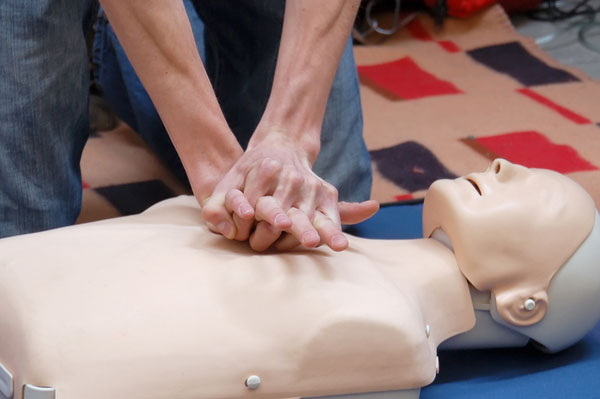Techniques RevealedThe American Heart Association announced new guidelines for CPR on Monday. The new form of CPR focuses less on breathing and more on proper chest compressions.

The old way of doing CPR was intimidating -- there were so many steps to remember that people spent more time thinking about it rather than actually giving CPR.
Not anymore. The American Heart Association announced their revised CPR guidelines on Monday with more emphasis on compressions than proper breathing techniques.
New CPR is novice-friendlyThe new CPR guidelines recommend focusing on chest compressions to keep blood and oxygen flowing to the brain and heart. The new recommendations comes on the heels of a study that shows compressions do more to save lives then proper breathing.
"For a variety of reasons, when someone suddenly collapses in cardiac arrest, people often don't start any type of CPR, and one of the barriers, we believe, is that people think it's fairly complicated to do CPR," said Dr. Michael Sayre, co-author of the new American Heart Association guidelines said.
"But chest compressions alone are easy, and anyone can do it," he told Businessweek.
Always call 911 firstThe American Heart Association recommends that anyone giving assistance should first call 911 (or instruct another person to call.) After medical personnel are notified, then first responders can begin chest compressions.
"To give the victim the best chance of survival, three actions must occur within the first moments of a cardiac arrest: activation of the EMS [emergency medical services] system, provision of CPR and operation of a defibrillator," according to the new guidelines.
Hard and fast compressionsMany who give CPR worry that their compressions will hurt the other person. In actuality, the American Heart Association says that first responders aren't compressing hard enough.
The new guidelines recommend that compressions be done at depth of at least one to two inches and at least 100 compressions per minute. Yes -- it will be tiring.
The process could break the patient's rib – but as the American Heart Association points out, it's better to break a rib and have the patient survive than risk the patient's life by being too careful.
More Health NewsCan you really lose 21 pounds in 21 days?
Better sleep strategies
Many Americans are planning to skip the flu vaccine in 2010
?
没有评论:
发表评论